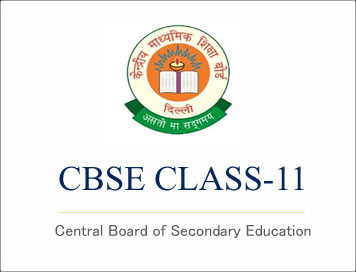CBSE Class-11 Syllabus 2019-20 (Geography)
Disclaimer: This website is NOT associated with CBSE, for official website of CBSE visit - www.cbse.gov.in
CBSE Class-11 Syllabus 2019-20 (Geography)
Rationale :
Geography is introduced as an elective subject at the senior secondary stage. After ten years of general education, students branch out at the beginning of this stage and are exposed to the rigors of the discipline for the first time. Being an entry point for the higher education, students choose Geography for pursuing their academic interest and, therefore, need a broader and deeper understanding of the subject. For others, geographical knowledge is useful in daily lives because it is a valuable medium for the education of young people. Its contribution lies in the content, cognitive processes, skills and values that Geography promotes and thus helps the students explore, understand and evaluate the environmental and social dimensions of the world in a better manner.
Since Geography explores the relationship between people and their environment, it includes studies of physical and human environments and their interactions at different scales-local, state/region, nation and the world. The fundamental principles responsible for the varieties in the distributional pattern of physical and human features and phenomena over the earth's surface need to be understood properly. Application of these principles would be taken up through selected case studies from the world and India. Thus, the physical and human environment of India and study of some issues from a geographical point of view will be covered in greater detail. Students will be exposed to different methods used in geographical investigations.
Objectives:
The course in Geography will help learners to:
- Familiarise with key concepts, terminology and core principles of Geography.
- Describe locations and correlate with Geographical Perspectives.
- List/describe what students might see, hear, smell, at a place.
- List/describe ways a place is linked with other places.
- Compare conditions and connections in one place to another.
- Analyze/describe how conditions in one place can affect nearby places.
- Identify regions as places that are similar or connected.
- Describe and interpret the spatial pattern features on a thematic map.
- Search for, recognize and understand the processes and patterns of the spatial arrangement of the
- natural features as well as human aspects and phenomena on the earth's surface.
- Understand and analyses the inter-relationship between physical and human environments and utilise such knowledge in reflecting on issues related to community.
- Apply geographical knowledge and methods of inquiry to emerging situations or problems at different levels-local, regional, national and global.
- Develop geographical skills, relating to collection, processing and analysis of spatial data/ information and preparation of report including maps and graphs and use of computers where ever possible; and to be sensitive to issues.
Cource Structure :
|
Part A |
Fundamentals of Physical Geography |
35 Marks |
|
|
Unit-1: Geography as a discipline |
30 |
|
|
Unit-2: The Earth |
|
|
|
Unit-3: Landforms |
|
|
|
Unit-4: Climate |
|
|
|
Unit-5: Water (Oceans) |
|
|
|
Unit-6: Life on the Earth |
|
|
|
Map and diagram |
5 |
|
Part B |
India-Physical Environment |
35 Marks |
|
|
Unit-7: Introduction |
30 |
|
|
Unit-8: Physiography |
|
|
|
Unit-9: Climate, vegetation and soil |
|
|
|
Unit-10: Natural hazards and Disasters |
|
|
|
Map and Diagram |
5 |
COURSE CONTENT
Part A: Fundamentals of Physical Geography 87 Periods
Unit-1: Geography as a Discipline 04 Periods
- Geography as an integrating discipline, as a science of spatial attributes.
- Branches of Geography; Physical Geography and Human Geography.
- Scope and Career Options
Unit-2: The Earth 11 Periods
- Origin and evolution of the earth; Interior of the earth.
- Wegener's continental drift theory and plate tectonics.
- Earthquakes and volcanoes: causes, types and effects.
Unit-3: Landforms 20 Periods
- Rocks: major types of rocks and their characteristics.
- Geomorphic processes: weathering, mass wasting, erosion and deposition; soil-formation.
- Landforms and their evolution- Brief erosional and depositional features
Unit 4: Climate 30 Periods
- Atmosphere- composition and structure; elements of weather and climate. Insolation-angle of incidence and distribution; heat budget of the earth-heating and cooling of atmosphere (conduction, convection, terrestrial radiation and advection); temperature- factors controlling temperature; distribution of temperature-horizontal and vertical; inversion of temperature.
- Pressure-pressure belts; winds-planetary, seasonal and local; air masses and fronts; tropical and extratropical cyclones.
- Precipitation-evaporation; condensation-dew, frost, fog, mist and cloud; rainfall-types and world distribution.
- Climate and Global Concerns.
Click Here To Download Full Syllabus
Courtesy: CBSE
